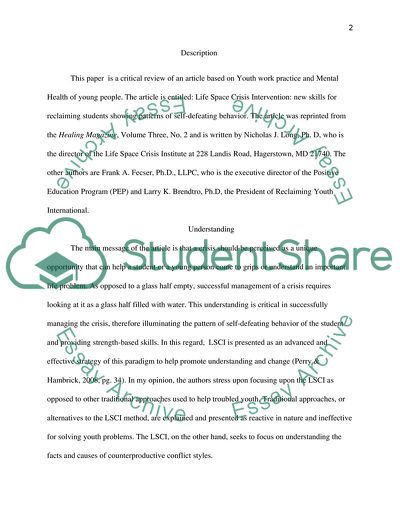Cite this document
(“A Critical Review in the Contemporary Themes in Youth Work Practice, Essay - 4”, n.d.)
Retrieved from https://studentshare.org/miscellaneous/1613765-a-critical-review-in-the-contemporary-themes-in-youth-work-practice-thematic-area-mental-health-and-emotional-wellbeing
Retrieved from https://studentshare.org/miscellaneous/1613765-a-critical-review-in-the-contemporary-themes-in-youth-work-practice-thematic-area-mental-health-and-emotional-wellbeing
(A Critical Review in the Contemporary Themes in Youth Work Practice, Essay - 4)
https://studentshare.org/miscellaneous/1613765-a-critical-review-in-the-contemporary-themes-in-youth-work-practice-thematic-area-mental-health-and-emotional-wellbeing.
https://studentshare.org/miscellaneous/1613765-a-critical-review-in-the-contemporary-themes-in-youth-work-practice-thematic-area-mental-health-and-emotional-wellbeing.
“A Critical Review in the Contemporary Themes in Youth Work Practice, Essay - 4”, n.d. https://studentshare.org/miscellaneous/1613765-a-critical-review-in-the-contemporary-themes-in-youth-work-practice-thematic-area-mental-health-and-emotional-wellbeing.


